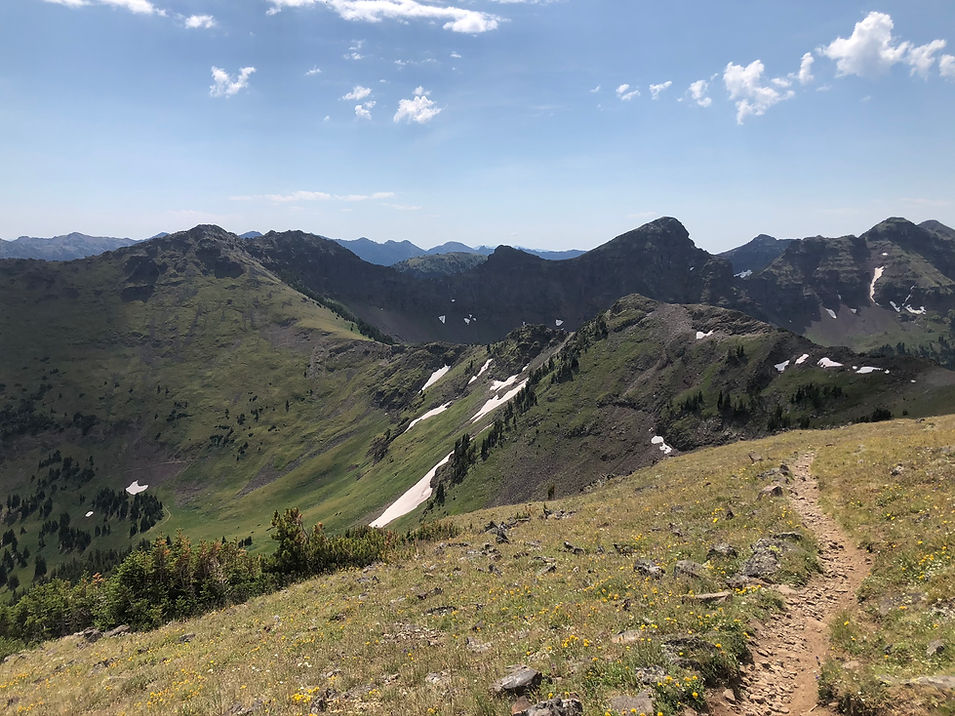

Quantitative Ecologist
Remote Sensing | Biodiversity | Landscape Ecology
I’m Alyson East, a PhD candidate in Quantitative Ecology at the University of Maine. My work bridges ecology, data science, and remote sensing to understand how ecosystems respond to change—both abrupt and subtle—across scales. I study patterns in forest structure, biodiversity, and disturbance history, asking how these layers interact to shape ecological stability and resilience.
At the heart of my research is a fascination with complexity: the way traits vary within and across species, the structural legacies left by land use and disturbance, and the spatial patterns that emerge from environmental patterns. I bring together ecological theory, machine learning, and large-scale datasets, from satellite LiDAR to insect museum specimens, to study these patterns in forests and biodiversity-rich landscapes across the U.S. and beyond.
My Reaserch
I work at the intersection of landscape ecology, biodiversity science, and remote sensing, where I use spatial and trait-based data to understand how ecological systems persist, shift, and recover in the face of disturbance. My work is grounded in the idea that ecological structure—whether in a canopy’s vertical complexity or a beetle’s elytra width—contains clues about ecosystem processes and resilience.
I’m especially drawn to forest ecosystems as model systems for exploring these ideas. Forests store disturbance legacies in their structure and composition, and by using tools like LiDAR, drone imagery, and satellite time series, I can extract and model those legacies across space and time. I integrate these structural signals with ecological theory, particularly size-abundance scaling and trait diversity frameworks, to ask how ecosystems self-organize and respond to stress.
Equally important to me is the role of biodiversity—not just the number of species, but the distribution of traits within a community. Much of my current work focuses on measuring biodiversity more meaningfully using trait data, often in novel ways. This includes developing computer vision pipelines to extract morphological traits from thousands of invertebrate specimens and combining those data with environmental gradients and disturbance history to test hypotheses about community assembly and ecosystem function.
Underlying all of this is a strong commitment to open science. I believe that big ecological questions demand transparent, scalable, and reproducible methods. Whether I’m segmenting tree crowns from LiDAR, synthesizing trait data from NEON, or building tools for phenotyping museum collections, I aim to contribute resources that other scientists can use, adapt, and build upon.
Ultimately, my research asks how structure and diversity shape the long-term resilience of ecosystems, and how we can use data and theory together to support their future.
Updates
2025
October
-
Aly passes her public Dissertation Proposal Defense: Scaling Ecological Insights
September
-
Aly's first chapter of her PhD dissertation is published in Methods of Ecology and Evolution: "Optimizing Image Capture for Computer Vision-Powered Taxonomic Identification and Trait Recognition of Biodiversity Specimens" -- this paper represents a large interdisciplinary effort to provide evidence based recommendations and calls for community action around digitizing biological collections.
-
HDR Machine Learning challenge launches using subset of Biorepository Images
August
-
Funcapalooza workshop -- "Beyond Beetle Bodysize" team presenting final results and next steps for sparce autoencoder identified traits at the Imageomics Funcapalooza workshop in Columbus Ohio
-
"Optimizing Image Capture for Computer Vision-Powered Taxonomic Identification and Trait Recognition of Biodiversity Specimens" poster presentation at ESA
-
Aly gives "Thriving in Grad School" presentation and Q&A at ESA's Career Central. Also see Kathleen Carroll's resources developed for the original delivery of this session
-
Photos from the Early Career Ecologist section Mentorship program at the ESA annual meeting -- organized by Kristen Emmitt and hosted by Aly
-
Aly passes the chair seat to Cait Rottler at the Early Career Ecologists Section Mixer at the ESA annual meeting in Baltimore MD
-
Aly accepts 3 awards on behalf of the Early career ecologists section at the ESA Council Meeting -- Section of Merit, Innovative leadership structure, and Innovative Member Engagement
-
Aly attends the ESA governing board meeting as the early career representative in Baltimore MD
June
-
Launch of Imageomics Funcapalooza workshop -- next gen organizer
-
Aly joins United By Nature Terrestrial chapter
-
"Fine-Grained Taxonomy with Vision Models: A Benchmark on Long-Tailed and Domain-Adaptive Classification" accepted to CV4Animals
-
"Early‐Career Publishing and Reviewing: Pitfalls and Perspectives" published in ESA's Bulletin -- this paper represents a synthesis of survey results of prospectives from ESA early career ecologist section members and a resultant discourse with the Editors in Chief of the ESA journals
May
-
Aly goes to the NEON Biorepository in Tempe AZ for 3 weeks to train new hires for imaging pinned carbids in the Biorepository collection and implement data collection, back up, and human in the loop automated processing pipeline
April
-
Aly and Rayeed present final results from the beetle-intake work at Pu'u Maka'ala field station at Imageomics all hands meeting in Columbus Ohio
January
-
AI and Ecology course spends three weeks in Hawaii -- Beetle intake group images the entire collection of Hawaiian beetles pinned at the Pu'u Maka'ala Natural Area Reserve NEON site
-
Field day assisting the bioacoustics crew collecting Sim cards from audio recorders from kīpuka forest patches to assess variation in bird vocals by localized community divergence
2024
September
-
Aly moves back to the University of Maine Orono to begin her PhD in the Record Lab
Contact
I'm always looking for new and exciting opportunities. Let's connect.
ORCID: 0000-0003-1143-1255
(207) 214-3213







